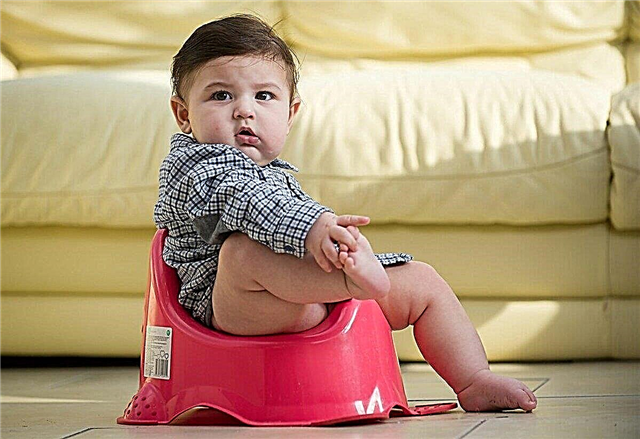
When a child is born, his immunity begins to "study" all the surrounding dangers. So, gradually, faced with certain viruses, of which there are several hundred on the planet, protection is developed in the form of antibodies to viruses.

Infection with some agents is hard not to notice, and some diseases go unnoticed or almost imperceptibly for the parents of the baby. Quite often, many moms and dads do not even suspect that the child has had infectious mononucleosis. The authoritative doctor Yevgeny Komarovsky tells whether it is possible to determine the symptoms of this disease in a child, and what to do if the diagnosis is confirmed.
About the disease
Infectious mononucleosis is a viral disease. It is caused by the Epstein-Barr virus, which belongs to common agents and is, in fact, a herpesvirus of the fourth type. This "elusive" virus is much more likely to come into contact with the world's population than it might seem to people themselves, as a result, more than 90% of adults have been infected with it. This is evidenced by the presence of antibodies in the blood.
Similar antibodies, indicating that there was an infection, immunity was developed, are found in about 45-50% of children aged 5-7 years.


The virus feels great in certain cells of the human body - lymphocytes. There he quickly replicates under the appropriate circumstances favorable to himself, which include a weakened immune system. Most often, the virus is transmitted with physiological fluids - saliva, for example, for this its infectious mononucleosis is often called the "kissing ailment." Less commonly, the virus is transmitted by airborne droplets.


The pathogen is transmitted through blood transfusions, organ and bone marrow transplant operations, as well as from a pregnant mother to a fetus through the general bloodstream.
Infectious mononucleosis refers to acute viral diseases, it does not have a chronic form. From the affected lymph nodes, the virus quickly spreads throughout the body, affecting the internal organs that have lymphoid tissue in their structure.
Symptoms
In 90% of cases, infectious mononucleosis in children is mild, says Evgeny Komarovsky, and therefore it is rarely possible to diagnose it. Children under 2 years of age rarely get sick with this ailment, and in the vast majority of cases, the disease is mild. Children from 3 years of age and older tolerate the disease much more severely, and boys get sick more often than girls. Why this is so, medicine cannot answer, but the fact is obvious.
After the mononucleosis virus enters the child's body, a foreign agent can behave peacefully for quite a long time. Here everything is decided by the state of the baby's immunity. If the natural defense is strong, it may take one and a half or two months. If the body is weakened, then the symptoms of an incipient disease may appear within 5-6 days.

According to Evgeny Komarovsky, the very first sign is an increase in lymph nodes. All groups of nodes increase to varying degrees, but most of all - cervical, submandibular, occipital. An ultrasound scan at this time can reveal an increase in the size of the spleen and liver (these organs are composed of lymphoid tissue). And in clinical blood tests, an altered lymphocytic formula will be revealed.
Immediately after this, the lymphoid tissue in the nose begins to become inflamed and increase in size (swell), the tonsils become inflamed. The child's nasal breathing is disturbed, he breathes mainly only through his mouth, there is a strong night snoring. The child may complain of a sore throat.

Common symptoms that are misleading for both parents and doctors are nonspecific:
- Lack or decreased appetite.
- Tearfulness, moodiness, lethargy.
- Increased body temperature.
- Pain when swallowing.
- Feeling of "aches" in the body.
All these symptoms together and some of them individually can cause suspicion in attentive parents and in a called pediatrician. A blood test should be done. Lymphocytes that are affected by the virus cease to be such, and turn into new cells, which a healthy child does not and cannot have in the blood. These altered cells are called atypical mononuclear cells. If the laboratory assistant finds them in the baby's blood, then the diagnosis will be fully confirmed. In addition, the number of leukocytes and monocytes in the blood will increase.


The danger of the disease lies not even in the disease itself, but in possible concomitant infections. When the lymphoid tissue, which plays an important role in the functioning of the child's immunity, is affected, the body becomes more vulnerable than usual to various viruses and bacteria. This can be dangerous from the position that a secondary disease can easily begin, any, depending on the microbe or viral agent that "joined". More often complications are bacterial in nature: tonsillitis, otitis media, pneumonia.
Komarovsky about treatment
The disease cannot be called fleeting. The acute phase lasts 2 to 3 weeks, with some a little longer. The child's well-being, of course, at this time will not be the best, and sometimes quite difficult. You need to be patient, because infectious mononucleosis passes in all children, without exception.
Uncomplicated mononucleosis does not require any specific treatment. If the child does not feel bad, then nothing, except to drink abundant, should not be given. If the condition of the crumbs is disappointing, then the doctor may prescribe hormonal anti-inflammatory drugs. There is no cure for mononucleosis, as such, so the treatment should be extremely symptomatic: a sore throat - rinse, your nose does not breathe - instill a saline solution, moisturize the mucous membranes of the bronchi in order to avoid complications from the respiratory system.


Komarovsky does not see expediency in taking antiviral drugs, since they will not have any effect on the herpes virus type 4, but they will significantly "hit" the parents' pocket. In addition, with the clinically proven efficacy of antiviral drugs, everything is quite deplorable. For the same reason, it makes no sense to give the child homeopathic medicines with the declared antiviral effect. Of course, there will be no harm from them, but you should not expect any benefit either.

Treatment should be based on the creation of favorable conditions conducive to the early independent recovery of the child:
- In the acute stage of the disease, the baby needs rest, bed rest;
- The child should breathe humidified air (relative humidity in the room - 50-70%);
- It is necessary to provide an abundant warm drink throughout the acute period;
- More often do wet cleaning in the child's room, while not using household chemicals that contain chlorine;
- At high temperatures, the child can be given "Paracetamol" or "Ibuprofen".
When the temperature becomes normal, it is possible and necessary to walk more often in the fresh air, refraining from visiting playgrounds, crowded places, so that the child does not infect others and does not "catch" another infection for weakened immunity himself.

During treatment, it is worth adhering to a therapeutic diet, excluding all fatty, fried, smoked and salty foods, as well as spicy, sour and sweet foods from the child's diet. In the acute stage, with difficulty swallowing, it is best to give vegetable soups, mashed potatoes, milk porridge-spreads, cottage cheese. During the recovery stage, it is not necessary to turn all food into mashed potatoes, but the ban on the above products remains in force.

If bacterial complications "joined" to mononucleosis, they can and should be treated exclusively with antibiotics. Parents should know that if the doctor prescribes "Ampicillin" or "Amoxicillin", which is popular in pediatrics, then the child has a 97% probability of developing a rash. Why such a reaction occurs is unknown to medicine today. We can only say with confidence that this rash will not be an allergy to an antibiotic, or a symptom of a separate disease, or a complication. It just appears and then goes away on its own. It shouldn't be scary.
Doctor Komarovsky's recommendations
Parents must report the fact of infection with infectious mononucleosis to the preschool institution that the child attends, or to the school. But this ailment does not require the introduction of quarantine. It is just that more frequent wet cleaning is required in the premises.
Recovery after an infectious mononucleosis is a rather long process, the immunity is greatly weakened. For the next year (sometimes six months), the attending pediatrician cancels all calendar vaccinations for such a child. The child is not recommended to stay in close children's groups for a long time. The kid should not be taken to the sea in order to "correct" his immunity, since severe acclimatization after a viral illness is guaranteed. During the year, it is not recommended to walk in the sun, visit sections where there is a strong physical activity.

The body should be supported in the recovery process with vitamin complexes that are allowed by age.

A child after a previous illness should be seen by a doctor more often. The virus has oncogenic activity, that is, it can contribute to the development of oncological tumor diseases. If, after an illness, for a long time, the same modified mononuclear cells continue to be found in the baby's blood tests, the child will definitely need to be shown and registered with a hematologist.

The virus that causes infectious mononucleosis, after the illness, develops a stable lifelong immunity. It is impossible to get sick a second time. The only exceptions are HIV-infected, they can have as many episodes of acute illness as they want.
Patient reviews
Most parents, whose children have had this ailment, argue that the longest and most painful period was precisely the diagnosis, since doctors are in no hurry to make an accurate diagnosis. Many patients who are not referred for treatment to the infectious diseases hospital due to the mild stage of the disease, doctors recommended taking antiviral drugs.
Patients who were treated at home using the Komarovsky method claim that complications did not occur, the disease passed quite quickly and was tolerated by the child relatively easily.
Below is a video with recommendations from Doctor Komarovsky himself.



